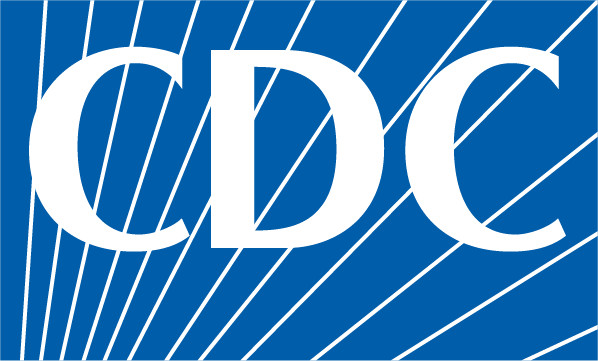By Cesar Antonio Nucum Jr
WASHINGTON – The latest figures in the monitoring of measles cases in the United States by John Hopkins Bloomberg School of Public Health-hosted measles tracker woefully showed that current year 2025 now has the most cases since the disease was declared eliminated in the U.S. in 2000 and the most cases in more than three decades.
According to a U.S. Measles Tracker hosted by the International Vaccine Access Center (IVAC) and developed in collaboration with the Center for Systems Science and Engineering (CSSE) at the Whiting School of Engineering, as of July 7, 2025, 1,281 cases have been reported, more than the 1,274 measles cases reported in all of 2019.
“Our U.S. Measles Tracker offers a high-resolution, county-level view of measles outbreaks around the country, which complements other state-level or state-specific reporting,” reported professor of civil and systems engineering at Johns Hopkins Lauren Gardner. “Because diseases don’t respect county and state borders, precise and timely information about ongoing outbreaks across the U.S. is critical for both the general public and public health officials to make informed decisions.”
Unsurprisingly, nearly all 2025 cases have occurred in those who are unvaccinated or whose vaccination status is unknown. Cases have been reported across a wide age range, indicating that this outbreak was years in the making due to long-standing gaps in measles vaccine coverage.
“The ongoing outbreak we are seeing in the U.S. underscores the importance of maintaining adequate levels of measles vaccination,” echoed IVAC Executive Director William Moss, who co-leads the measles tracking project. “The U.S. is at risk of losing its measles elimination status should cases continue at this rate. As vaccine confidence continues to be undermined, immunization is more important than ever to end this outbreak and prevent future outbreaks from occurring.”
This collaborative, interdisciplinary effort reflects contributions from Johns Hopkins researchers at the Center for Systems Science and Engineering (CSSE) at the Whiting School of Engineering, the International Vaccine Access Center (IVAC) at the Bloomberg School of Public Health, and the Bloomberg Center for Government Excellence at Johns Hopkins University.
For its part, the U.S. Center for Disease Control and Prevention (CDC) latest July 8, 2025 report showed that a total of 1,288 confirmed measles cases were reported by 39 jurisdictions: Alaska, Arkansas, Arizona, California, Colorado, Florida, Georgia, Hawaii, Illinois, Indiana, Iowa, Kansas, Kentucky, Louisiana, Maryland, Michigan, Minnesota, Missouri, Montana, Nebraska, New Jersey, New Mexico, New York City, New York State, North Carolina, North Dakota, Ohio, Oklahoma, Oregon, Pennsylvania, Rhode Island, South Dakota, Tennessee, Texas, Utah, Vermont, Virginia, Washington, and Wyoming.
There have been 27 outbreaks reported in 2025, and 88% of confirmed cases (1,130 of 1,288) are outbreak-associated. For comparison, 16 outbreaks were reported during 2024 and 69% of cases (198 of 285) were outbreak-associated.
Thus far, U.S. total cases in 2025 are 1288 with the following breakdown according to:
Age: Under 5 years: 368 (29%), 5-19 years: 469 (36%), 20+ years: 439 (34%), age unknown: 12 (1%)
Vaccination Status: Unvaccinated or Unknown: 92%, one MMR dose: 4%, two MMR doses: 4%
There were 13% of cases U.S. hospitalization in 2025 (162 of 1288)
Percent of Age Group Hospitalized: Under 5 years: 21% (77 of 368), 5-19 years: 8% (37 of 469), 20+ years: 11% (47 of 439), age unknown: 8% (1 of 12)
There were three confirmed deaths from measles so far this year.
Some people think of measles as just a little rash and fever that clear up in a few days. But measles can cause serious health complications, especially in children younger than 5 years old.
Measles is highly contagious. If one person has it, up to 9 out of 10 people nearby will become infected if they are not protected. It spreads through the air when an infected person coughs or sneezes. You can get measles just by being in a room where a person with measles has been. This can happen even up to 2 hours after that person has left.
Protect yourself with the vaccine. The best way to protect against measles is with the measles, mumps, and rubella (MMR) vaccine. MMR is safe and effective. Two doses of MMR vaccine are about 97% effective at preventing measles; one dose is about 93% effective. Prevent measles and talk to your healthcare provider about the MMR vaccine, especially if planning to travel.
Measles symptoms appear 7 to 14 days after contact with the virus. Common measles symptoms include: high fever (may spike to more than 104° F), cough, runny nose (coryza), red, watery eyes (conjunctivitis), and rash.
Measles can cause serious health complications, especially in children younger than 5 years of age. Common complications are ear infections and diarrhea. Serious complications include pneumonia and encephalitis.
Anyone who is not protected against measles is at risk. Measles was declared eliminated from the United States in 2000. However, measles is still common in many parts of the world. Every year, measles is brought into the United States by unvaccinated travelers who get measles while they are in other countries. These travelers are mostly Americans and sometimes international visitors. Some people are a higher risk of experiencing severe complications from measles.

















